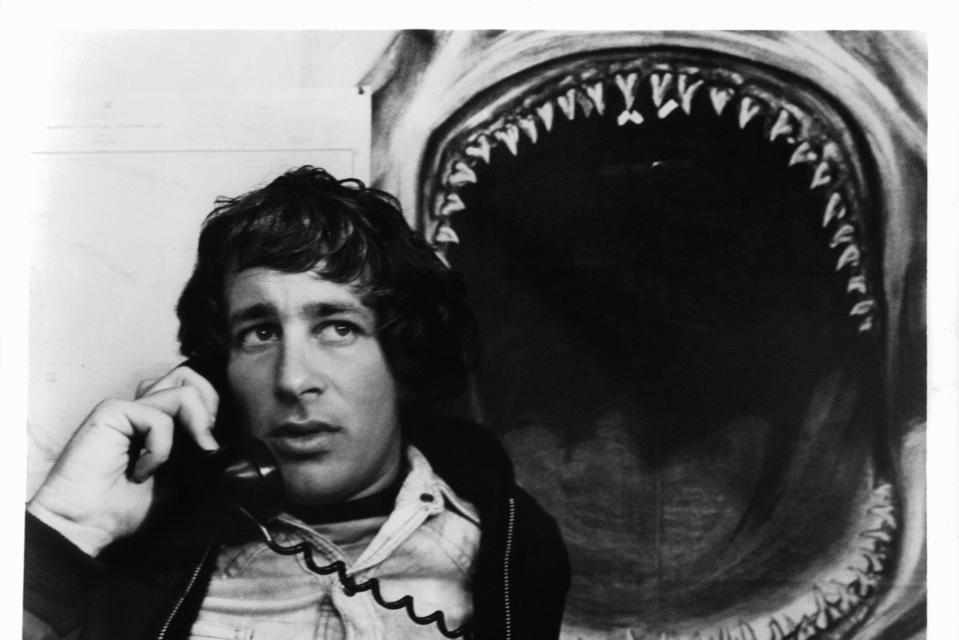On June 20th, 1975, Steven Spielberg’s magnum opus hit the silver screen. Here’s how the legacy of … More
It’s now been half a century since Jaws first premiered in the summer of 1975. It only took a shark that barely appeared on screen and an iconic two-note score for the film to terrify us in ways that forever altered our relationship with the ocean.
Beyond the blood and suspense, however, Jaws was a deeply psychological film. And perhaps more interestingly, it sparked conscious and unconscious responses that rippled through society. Some of these effects are still observable today, 50 years later.
As a psychologist, I find myself revisiting Jaws as a case study in how fear spreads throughout culture and within our very minds. Its status as a cinematic and psychological landmark remains unquestionable, and likely permanent.
Here’s how Jaws conditioned, amplified and in some cases, rewired the way we think about nature, threat and the unknown.
The Conditioning And Amplification Of Fear
One of the most long-lasting psychological effects of Jaws is its influence on thalassophobia: the fear of deep, open water. More obviously, scientists also credit Jaws as one of the primary reasons behind the spread of galeophobia, the fear of sharks.
Of course, both fears existed long before 1975. All Jaws did was bring them into our collective consciousness, with intensity that few other shark movies have been able to recreate.
Classical conditioning offers one explanation. This psychological process, as first described by Ivan Pavlov, explains how our brains learn to associate unrelated stimuli with specific emotional outcomes.
Spielberg leveraged this over the course of the film; the film’s two-note theme became a cue for danger. By the end, just hearing that music — even completely out of context — can trigger a visceral response.
Before Jaws, those two eerie notes were just meaningless sounds. But through repeated pairings with shark attacks, the music transformed into a conditioned stimulus: they trigger our fears, even without reason to think that a threat was present. Spielberg turned a completely neutral cue into something highly emotionally charged, simply by means of timing and repetition.
It may have already been fifty years, but those two notes are still firmly embedded in the audience’s nervous system. We hear them, even on dry land, and expect a dorsal fin to manifest in our periphery.
From the perspective of cognitive psychology, Jaws also exemplifies the availability heuristic. Research from the Journal of Experimental Psychology: Applied describes this process as a mental shortcut that the brain takes in order to estimate how likely an event will be.
In simple terms, if an event sticks out in your memory, regardless of how unrealistic or improbable it is, you’re more likely to think that it’ll happen to you.
So, thanks to Jaws, shark attacks feel significantly more common than they actually are. Spielberg’s imagery was so vivid that it continues to dominate our mental availability when it comes to anything oceanic.
In reality, however, the odds of a fatal shark attack remain ridiculously low. If you’re in the United States, there’s around a 1 in 11.5 million chance that you’ll be attacked by a shark in your lifetime. There’s an exceedingly lower chance that you’d be killed by a shark: 1 in 264 million.
Yet for many, especially those who saw the film as kids, the fear it inspired lingers far longer than logic could ever reliably predict.
The Devil You Know Versus The Devil You Don’t
Arguably, what made Jaws most terrifying wasn’t what you could actually see; it was what you couldn’t. As a result of various technical issues with the mechanical model, the shark appeared on screen for just four minutes across the film’s total two-hour run time. Yet, despite his measly 3.33% of exposure, he’s still one of the most feared and notorious movie villains of all time.
This very absence, as it turned out, was Jaws’ greatest psychological advantage.
As 2017 research from Emotion explains, humans are particularly sensitive to ambiguity when it comes to threat. Being unable to actually see the danger forces our imaginations to fill in the gaps. And, more often than not, our minds run wild with scenarios far worse than probable realities.
In this sense, Spielberg’s use of delay became fodder for anticipatory anxiety. It’s the dread we feel before something happens, and it often heightens our experience of fear far more than the event itself.
For this reason, the rarity of the shark’s appearances only amplified the fear. The real terror wasn’t in seeing him, but rather in knowing that he could strike at any moment — even if he never did. That mere possibility was enough to make audiences flinch at the mere sight of water.
Collective Emotional Contagion
The public’s response was both astounding and devastating in the weeks and months after Jaws first premiered.
Some coastal towns reported noticeable declines in beach attendance. More shockingly, shark fishing spiked. JSTOR Daily notes that shark populations plummeted drastically directly after the film’s release: “One hundred million sharks are killed each year, and more than 30 percent of shark species are considered at least ‘threatened.’” This decrease in population continues today.
Spielberg himself has expressed profound remorse in this regard. “To this day, I regret the decimation of the shark population because of the book and the film. I really, truly regret that,” he explained in a 2022 interview with BBC.
This unfortunate response is the result of what social psychologists refer to as emotional contagion. As described in 2021 research from Frontiers in Psychology, it refers to how social phenomena can spread emotions, much like flus or viruses, in ways that lead people to respond and act in behavioral synchrony.
To this end, Jaws catalyzed widespread moral panic; it instilled a fear so deep that it overrode both facts and logic. People began reacting to the very idea of sharks, instead of just to Jaws as a movie or as sharks as a living species.
It didn’t matter that shark attacks were (and still are) statistically rare. The emotional weight of the film made them feel imminent and everywhere.
Fifty years later, Jaws still works. And that, in itself, is a testament to how universal and timeless the terrors it awakened really are. It didn’t invent our fear of sharks or the sea, but it did give those fears a form — and it amplified them in ways worthy of both celebration and condemnation.
Does your fear of the ocean run as deep as others’? Take this science-backed test to find out you compare: Thalassophobia Test








